|
DIVE
PLANIT - 1 MARCH 2016
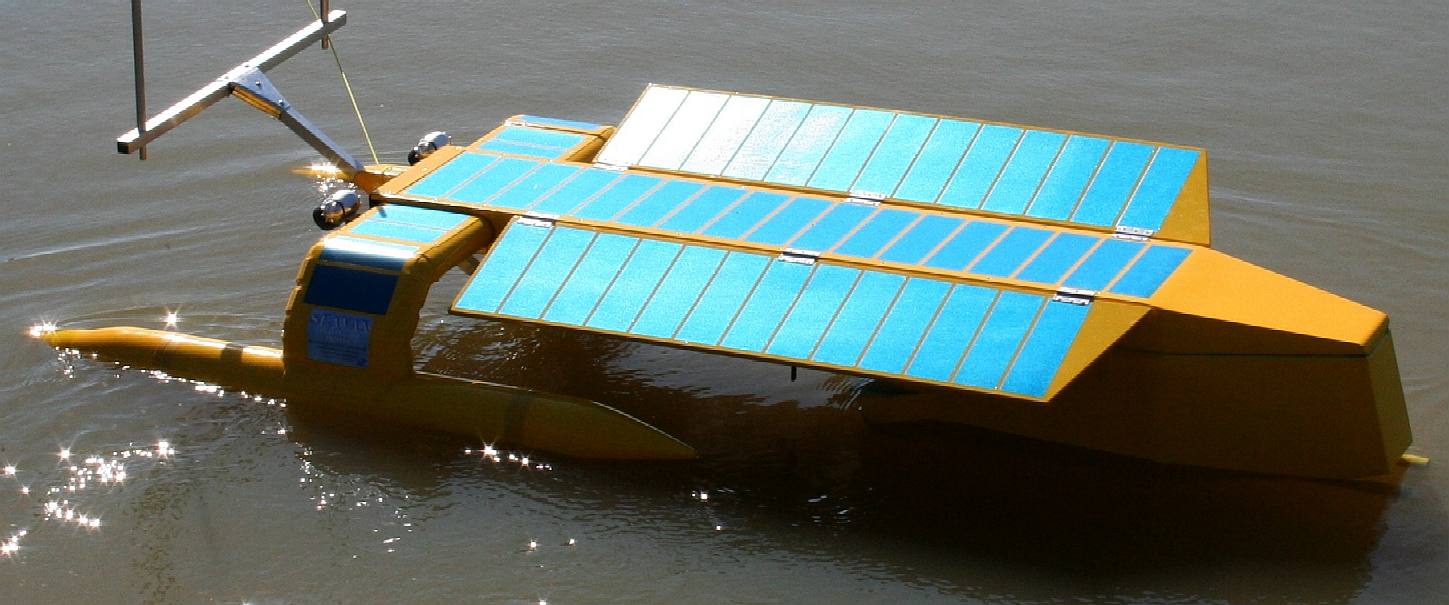
RIVERVAX™
- Is a potential solution for surface (and subsurface) river
and ocean pollution that is cost effective.
The value of such a versatile vessel might not be limited to the ability
to vacuum the Ganges
clean for example, but the blue water version, called SeaVax,
could target any area of the high seas that is rich enough in
plastic waste to make it worthwhile for the operators to
harvest. This go
anywhere workboat is solar and wind
powered, another step forward for any nation that is coming to
terms with climate
change and acid oceans. The
vessel is designed to hold 150 tons of waste until it can
discharge at sea to a transfer tanker, or dock in port and
discharge directly to waiting treatment plants.
1
MARCH 2016 - MYTH BUSTING OCEAN CLEAN UP MACHINES
There have been a few ocean-cleanup solutions doing the social media rounds recently, but is this really the solution we’ve all been hoping for?
We tested the popularity of this cleanup concept yesterday ourselves, with a fictional and nonsensical attempt from “Our Man in Havana”, and were rewarded with plenty of ‘likes’.
Two ambitious projects have been announced so far, to much acclaim. The Bluebird SeaVax below, can supposedly (and profitably) perform the ocean clean up for us. Before this innovation did the rounds, schoolboy Boyan Slat developed the concept of ‘How the Oceans can Clean Themselves’.
But seriously, let’s look at what’s involved in cleaning up a small patch of the ocean about the size of Texas – called the Great Pacific Garbage Patch.
Let’s consider the technical challenges and economics of creating a “SeaVax” – an ocean-going vacuum cleaner of any kind.
CHALLENGES
Not forgetting that oceans can be pretty inhospitable places – and getting more so with climate change. Any kind of SeaVac device needs to be able to:
* power, control and maintain itself (ie, be completely autonomous)
*
deal with micro plastic (fragments smaller than 1mm diameter), floating rubbish like bottle tops, submerged debris
like a milk crate, large items like a tree trunk, and marine life of all sizes.
*
get out of the way of large ships which do not want to alter course.
*
withstand
storms, with constant drenching with salt water and uneven seas
*
deal with material, not just on the surface, but down to 20m below the surface
*
store and periodically off load the harvested materials.
*
do this and produce an economic return from the material collected.
ECONOMICS
Bluebird’s economic fairy tale proposes that the price paid for the waste plastic it collects would help to pay-off the initial build costs over a number of years. Simply put, their business case reads like this:
To build a unit costs US$ 2.8M. Annually, one Bluebird processes 90 million litres of sea water; which at 1% plastic, would yield 900,000 kg of plastic which at US$ 0.42/kg yields a return of US$ 380,000 per annum when that plastic is delivered to a shore based recycling station.
Assuming the device can function at this rate continuously without maintenance for 7.5 years it becomes about cost neutral at this point.
REAL ISSUE
The problem is that between 5 and 12 million tonnes of new plastic is being added to our oceans each year. Let’s just use 9 million tonnes or 9,000,000,000 kg as a working figure.
This would require a fleet of 10,000 SeaVax just to collect all the new plastic we add each year! That’s a US$ 30 billion fleet.
The other fallacy that Bluebird’s business model depends upon, is that our oceans have a 1% concentration of plastic, which is 10g of plastic per 1 litre of water. That’s the equivalent of a 23g plastic coke bottle in every 2.3 litres of water. We have reproduced this scenario using strictly controlled conditions at the Diveplanit Labs.
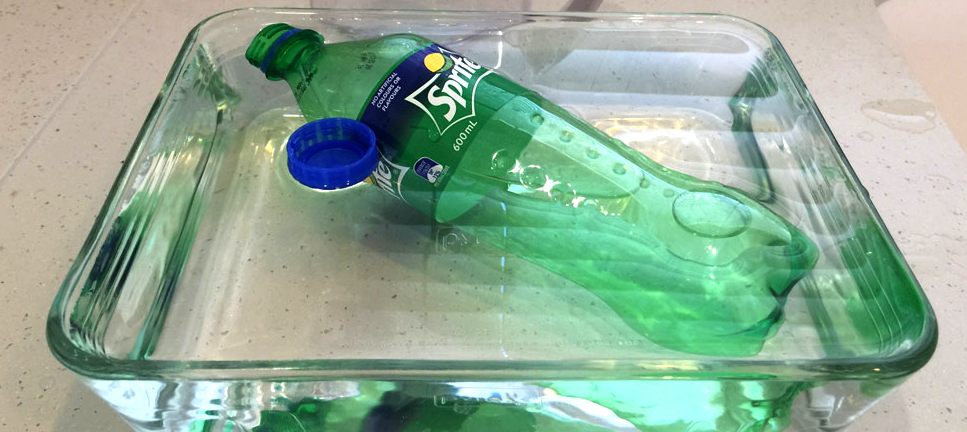
ACTUAL scientific estimates are 4 particles per cubic metre. So about 4g per 1000 litres of water, or 1/10,000 of 1 percent. So even with the Coke Cola company selling billions of single-use plastic bottles each year, our oceans are thankfully not yet that plastic!
Boyan Slat’s feasibility study is a little more realistic: his model suggests that a 100km array could capture 70 million kg of debris over a 10 year period at a total cost of around US$300 million. That’s 70,000 tonnes in 10 years, which is about 1% of what we’ll dump into the oceans in the first year of operation.
So is it just a conspiracy, developed by Big Business, to con us into thinking that we can continue to consume and discard at the current rate – because eventually someone will invent a machine to clean it up (and make money in the process)?
If such a thing were possible, you would think Coca Cola
would invest some of its $7 billion annual profits in the concept. But instead, Coca Cola spends billions on advertising persuading us that this disposable lifestyle is not just OK, but actually desirable.
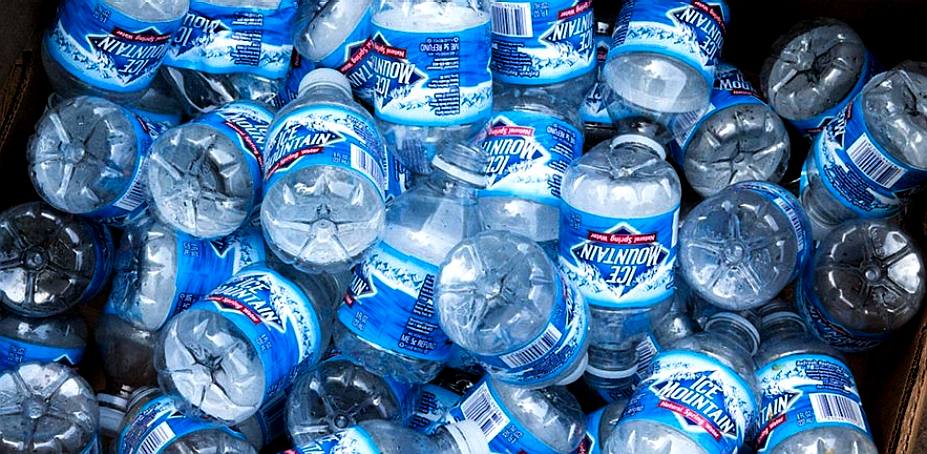
SOLUTION
IN SIGHT?
So what is the solution? There is no real solution other than to STOP using it.
* STOP using single-use plastic bags at the supermarket,
* STOP using single-use drink containers,
* STOP using straws,
* STOP using takeaway coffee cups
* STOP using all these single-use plastic items getting into the Oceans in the first place.
The best way YOU can contribute is to support the ban on shopping bags at cleanup.org.au and show your support for a Container Deposit Scheme at the BoomerangAlliance.
It seems to be human
nature to believe that someone will come and clean up all the mess we leave behind. But it’s simply not going to happen.
COMMENTS - thoughts on “Myth Busting Ocean Clean Up Machines”
March 11, 2016 at 2:22 pm - Terry Valeriano says:
Great article and could not agree more that we should stop using plastic for wrapping and displaying products.
Sadly, in the real world just about all retail sales in supermarkets especially, depend on plastic. We could go back to glass for bottles, but that is not going to happen either. It’s a bit like demanding that we all drive an electric car right now – it is not going to happen with an economy that is oil bound for energy.
It is the same with packaging and so much money invested by so many giant conglomerates in plastic.
Meantime, if you want to at least make an attempt to contain our dirty habits, you can support projects like SeaVax that at least stand a fighting chance of making a difference.
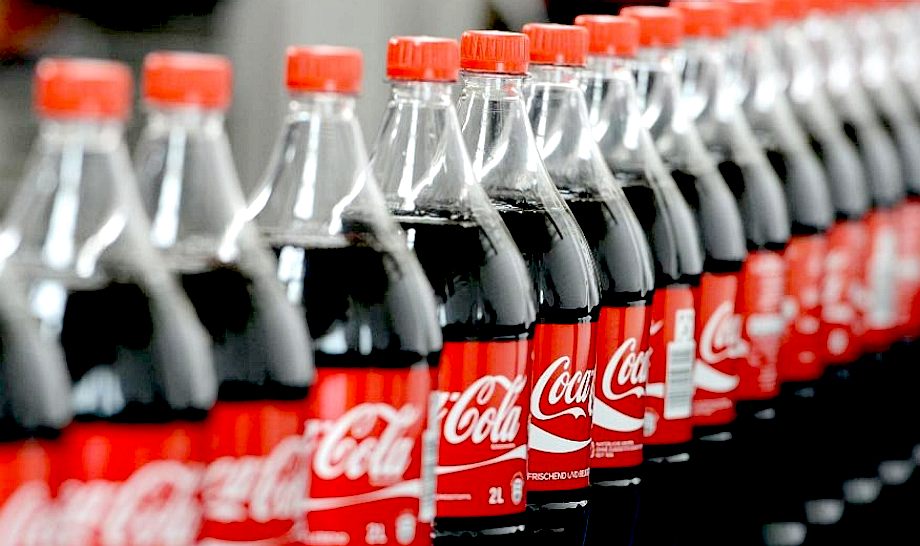
EDITORIAL
COMMENT
There
is no pleasing some people. SeaVax is COLREGs
compliant - meaning that is avoids other shipping that is not
behaving as it should when human error creeps in. Robot ships
hold the potential to reduce marine accidents. Hundreds of
marine craft operate autonomously. Even Rolls-Royce
are
working on this for cargo ships with the MUNIN project.
Ocean
plastic is known to be in the top 3 meters of the sea. A good
engineer designs a machine that deals with sensible harvests,
not pipe dreams. You have to dig where the gold is. Fortunately,
in this case the concentrations of plastic are not 20 meters
deep - so why design a vessel to scoop nothing much - when you
can design a vessel to scoop more, and in so doing, make it
viable.
It
is plain from the design specification that SeaVax can store
150 tons of waste until a converted HandyMax bulk carrier can
empty it. There is a plan to deal with such logistics, which
no other ocean
cleanup project
has tackled to date - or at least we have not seen such a
plan.
If
everyone was to take the same view as some journalists -
nothing would ever be achieved. It is very easy to criticize
those who have the drive to think of a solution and then try
to put a plan into action. If nothing is done, we risk harming
the oceans irretrievably. Perhaps critics should try not to
kill off the goose that is about to lay the golden egg, before
they get a chance to lay one.
Waste
disposal costs money, it is not a profit making venture. You
pay to have your household garbage taken away. Why then should
you not pay to have the ocean garbage collected. The fact that
there is a possible break even point is a bonus to any
government looking to clean up the ocean.
We
are reliably informed that Dive PlanIt did not speak with any
person from Bluebird Marine Systems (BMS) before writing their
article. Cleaner Oceans Club did take the time to ask about
many of the issues raised by skeptics.
BMS
take exception to the comments suggesting that they are
involved in some sort of conspiracy with big business. As of
the date we published this review of the Dive PLanIt article,
they had no ties with any "Big-Business".
Boyan
Slat's plan to anchor a 100
kilometer boom to the ocean floor has its own set of problems,
not least of which is the navigable risk such an obstruction
poses to shipping. In all the 269 pages of their detailed
report, there is no mention as to how the plastic is going to
get from the bottom of the funnel (or other collection point) of these booms
underwater
- to land for treatment.
Dive
PlanIt should revisit their maths, with the greatest of
respect, they appear to have ignored the basis of the SeaNet
plan, that offers a possible solution in under 10 years. The
inventors cannot publish their fishing strategy, but we know
from conversations that it is not just chuck a boat into the
ocean anywhere. Operation SeaNet is a carefully thought out
plan with ships that learn as they go.
A
respected Report
tells us that there will be more plastic in the ocean than
fish by 2050. Dive PlanIt give no regard to the intelligent
operation of SeaVax units, suggesting that a company that is
about to launch one of the most advanced ocean going machines
ever built, will then be stupid enough to send it where there
is no plastic to recover.
Dive
PlanIt make no mention whatsoever
as to the ability of a river
going version of SeaVax, to scour large bodies of water for
plastic debris before it ever reaches the ocean.
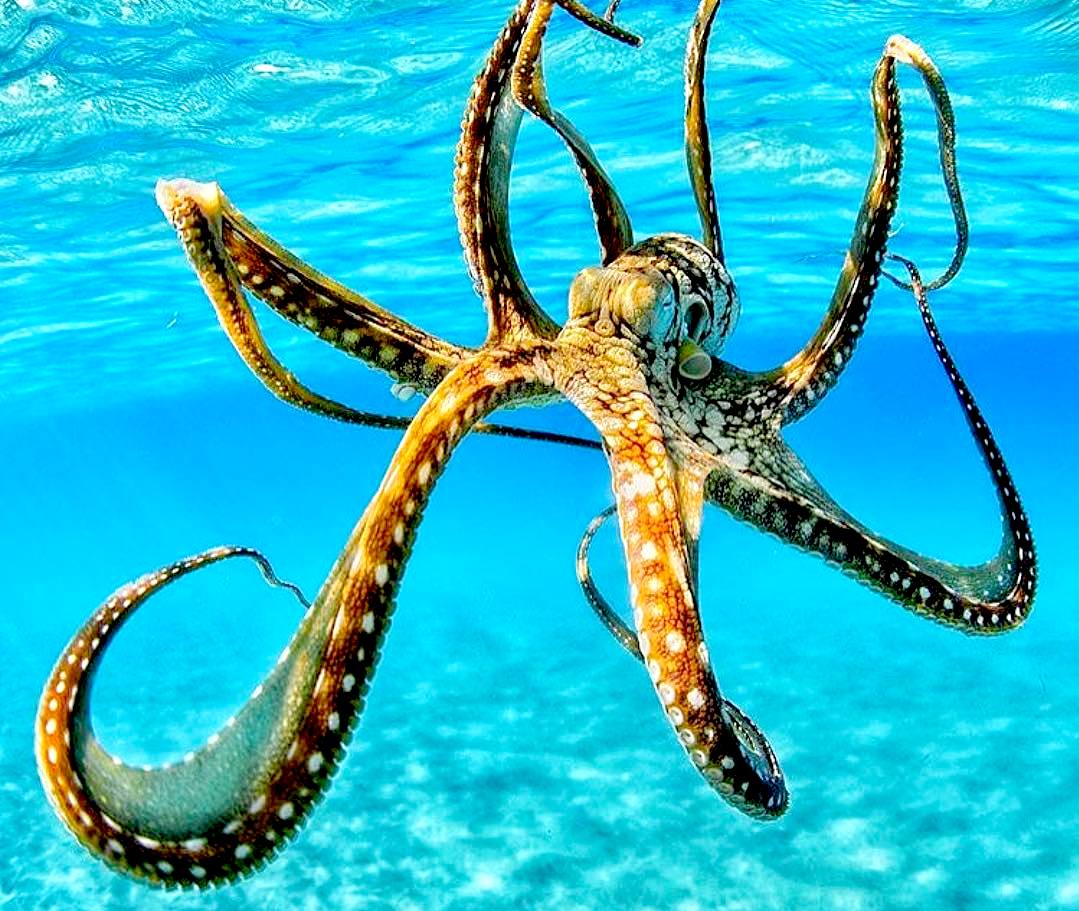
OCTOPUS
- This is a magnificent picture of a dancing octopus in
what seems to be some of the most beautiful blue water on the
planet - and not a boom or SeaVax in sight.
DIVE PLANIT CONTACTS
Strangely, there is no postal address, telephone number, or other email contact published on
the Dive PlanIt website, other than a contact form. That makes
sense when it comes to publishing potentially libelous statements as to big business and
conspiracy theories that we assume are merely reckless
rhetoric, not really thinking of the consequences. We hope for
clarification in the near future should anyone care to
comment.

LINKS
& REFERENCE
http://www.cleanup.org.au
http://www.boomerangalliance.org.au
https://twitter.com/DivePlanIt
https://twitter.com/DivePlanIt
http://www.diveplanit.com/category/marine-environment/marine-litter/
http://www.diveplanit.com/category/marine-environment/
http://www.diveplanit.com/2016/03/myth-busting-of-the-ocean-clean-up-machines/#comment-37488
|